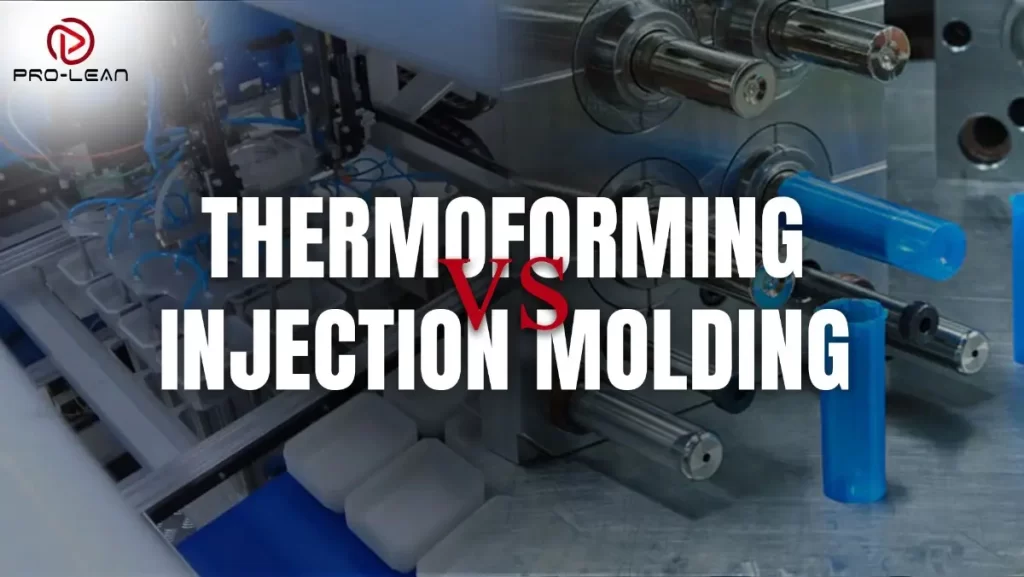
Thermoforming Vs. Injection Molding
Manufacturers need to choose between thermoforming and injection molding when producing their plastic products.
The production of various objects depends on these two essential manufacturing methods, which differ substantially in their methods and financial requirements , and functional uses.
The thermoforming process heats plastic sheets before using molds to shape them, but injection molding uses melted plastic to create complex, precise components.
ProleanTech provides specialized advanced manufacturing solutions to meet the needs of automotive, medical, and consumer goods industries.
This guide explains the main distinctions between thermoforming and injection molding while describing their manufacturing processes and advantages, and suitable applications to assist you in selecting the manufacturing method for your needs.
What is Thermoforming Or Thermoformed?
The thermoforming manufacturing process starts by heating plastic sheets until they become pliable before shaping them into specific forms using molds.
The formed sheet maintains its new shape after it cools down. The manufacturing process produces thin-wall parts and packaging, and various consumer products.
The common thermoforming examples include trays and containers that are usually made from thermoformable plastic.
What is Injection Molding?
The manufacturing process of injection molding requires molten plastic to be injected into a mold cavity. The plastic solidifies after cooling to form a product that matches the mold design.
The production of complex, accurate parts at high volumes relies heavily on this manufacturing technique. Although, the injection molding industry is known for creating precise components used in many applications.
Must Read: Injection molding: Types, applications, and benefits
The Process of Thermoforming
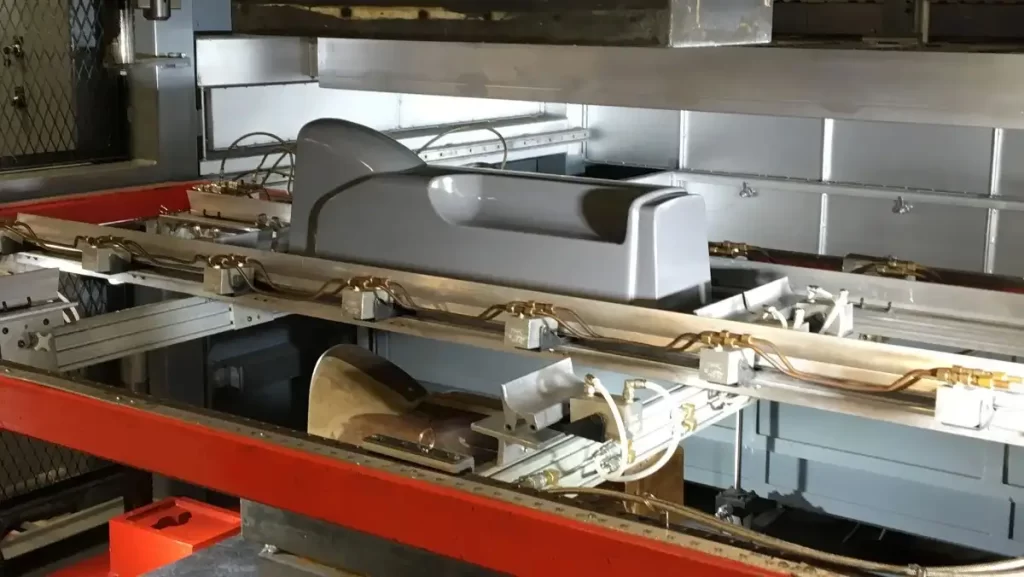
The Process of Thermoforming
Plastic shaping through thermoforming occurs by heating a sheet until it becomes soft before molding it into a specific form. The thermoforming molding process includes these specific steps:
Step 1 – Material Selection
Select the appropriate plastic sheet as your first step. Polyethylene, polypropylene and polystyrene represent the most common plastic materials used in this process.
The selection of plastic types depends on their unique characteristics which include flexibility strength and heat resistance.
Step 2 – Heating
The plastic sheet undergoes heating inside an oven until it reaches the appropriate temperature. The heating process for plastic sheets occurs between 300°F to 400°F (150°C to 200°C) based on the plastic type.
Step 3 – Forming
The heated plastic sheet receives its shape by being placed over a mold after it reaches a soft state. This can be done in different ways:
Vacuum Forming: A vacuum pulls the sheet onto the mold to shape it.
Pressure Forming: Air pressure pushes the sheet tightly against the mold for detailed designs.
Step 4 – Cooling
The formed part requires cooling to allow the plastic material to solidify in its new shape. The cooling process occurs through natural methods or by using specific cooling equipment.
Step 5 – Trimming
The product becomes complete after the cooling process when excess material gets cut away. The production process includes painting operations and assembly of parts after this step.
Try Prolean Now!
The Process of Injection Molding
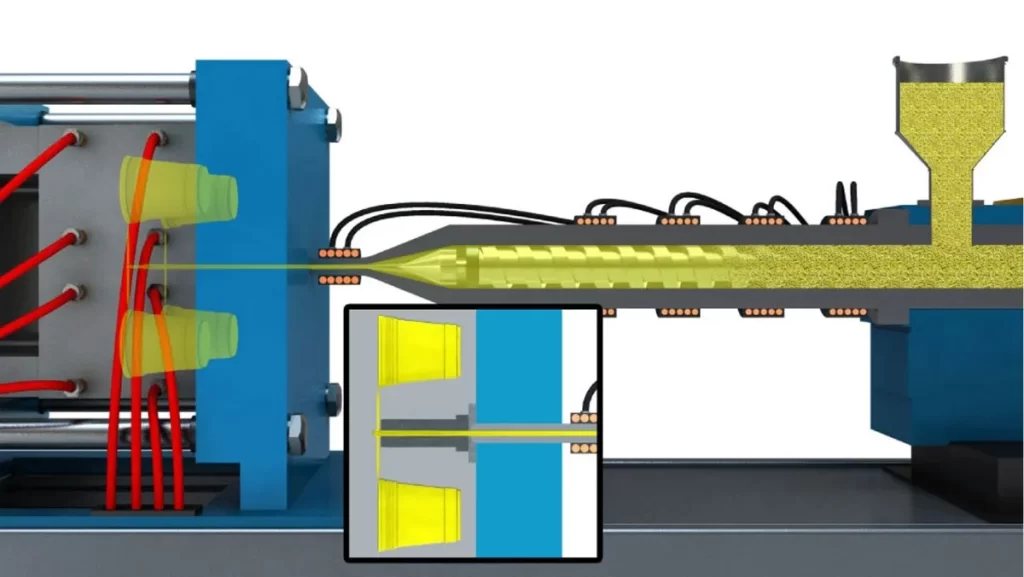
The Process of Injection Molding
The production of parts through injection molding occurs by forcing molten plastic material into a mold. The manufacturing technique produces exact and intricate designs. The following steps explains the injection molding production sequence:
Step 1 – Material Preparation
First, choose the right plastic pellets. The three main plastic types used in production consist of polypropylene, polystyrene and nylon. The selection of plastic material depends on the desired characteristics of the end product.
Step 2 – Melting
The plastic pellets undergo heating inside a barrel until they transform into a viscous liquid state. The melting temperature for plastics extends between 350°F to 500°F (175°C to 260°C) based on the specific plastic material.
Step 3 – Injection
The melted plastic substance receives high-pressure injection into molds after its melting stage. The high pressure during this process enables the molten plastic to penetrate all areas of the mold while maintaining precise details.
Discover More: https://proleantech.com/foam-injection-molding/
Step 4 – Cooling
The plastic stays in the mold to cool and harden. The cooling duration depends on both the thickness of the part and the specific plastic material being used. The correct cooling process maintains the correct shape of the part.
Step 5 – Ejection
After cooling, the mold opens, and the finished part is removed. This step may use special tools to help take the part out smoothly without damaging it.
Step 6 – Post-Processing
The final production stage involves trimming, along with painting and assembling parts according to product requirements.
Must Read Guide: China Injection Molding: Advanced & Efficient Manufacturing Solutions
Types of Thermoforming
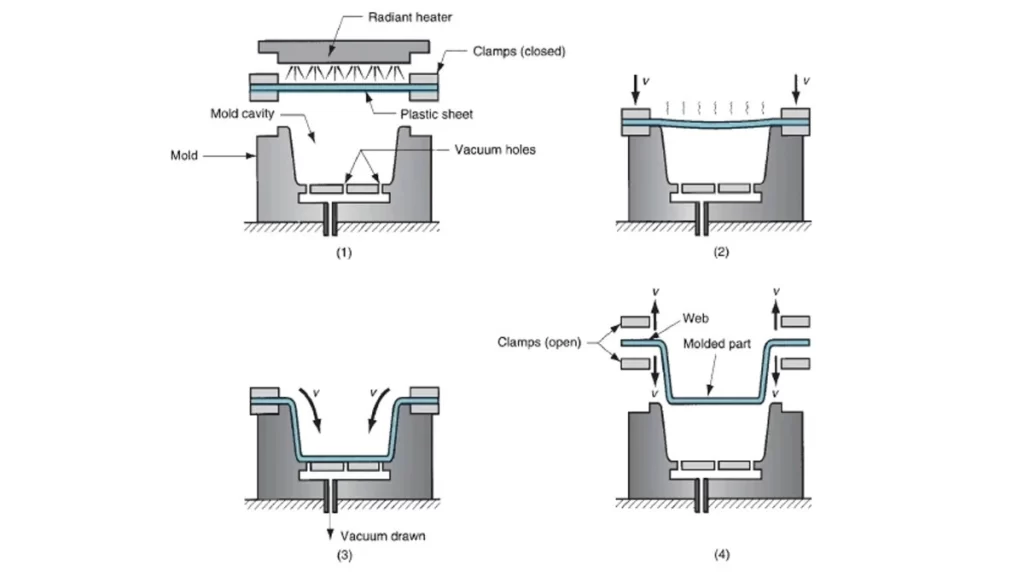
Types of Thermoforming
The thermoforming process includes multiple techniques which serve different purposes for various design applications. Here are the main types:
1. Vacuum Forming
The vacuum forming process involves heating plastic sheets until they stretch over molds. The vacuum creates a tight fit between the sheet and the mold through its downward pull.
Applications: Commonly used for packaging, signs, and trays.
2. Pressure Forming
The process of pressure forming operates similarly to vacuum forming yet employs air pressure to force heated plastic sheets into mold shapes. The process enables the creation of complex designs.
Applications: The manufacturing process of car parts requires this method because it delivers precise results.
3. Twin Sheet Thermoforming
The process of Twin Sheet Thermoforming heats two plastic sheets simultaneously before shaping them into their final form. The two sheets bond together to form a hollow part.
Applications: Great for making strong, lightweight items like containers and car parts.
4. Drape Forming
The drape forming process requires placing heated sheets onto molds without vacuum or pressure systems. The shaping process depends on gravity to form the material.
Applications: Used for making simple shapes and prototypes.
Types of Injection Molding
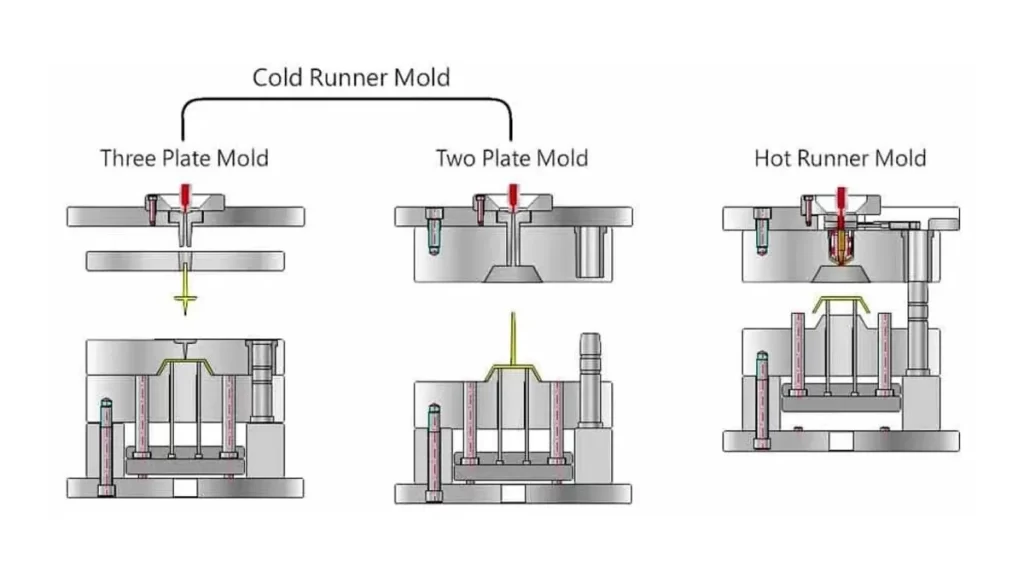
Types of Injection Molding
The injection molding process includes multiple techniques which serve particular applications and material requirements. Here are the main types:
1. Conventional Injection Molding
The standard injection molding process involves forcing molten plastic into a mold through high pressure. The process enables the production of various distinct parts.
Applications: Used in cars, consumer products, and electronics.
2. Gas-Assisted Injection Molding
The process of Gas-Assisted Injection Molding combines plastic with nitrogen gas inside the mold. The addition of gas to the mold produces hollow sections that reduce material usage while maintaining part strength.
Applications: Great for large, hollow parts like handles and car parts.
3. Foam Injection Molding
The process of foam injection molding includes adding blowing agents to molten plastic to produce foam structures. The final product becomes both lightweight and robust.
Applications: Commonly used for car parts and packaging, like dashboards and containers.
4. Structural Foam Molding
The process of foam injection molding with chemical blowing agents operates at reduced pressures to produce parts featuring strong outer layers with foamy interiors.
Applications: Good for large, strong items where being lightweight matters, like outdoor furniture and car parts.
5. Multi-Shot Injection Molding
The process of Multi-Shot Injection Molding allows multiple materials to be injected simultaneously into a single mold. The process enables manufacturers to create parts which combine various colors and features.
Applications: Used for products that need two materials, like toothbrushes and special handles.
Find Out More: Mastering hot runner injection molding for efficient output
Try Prolean Now!
Advantages of Thermoforming Compared to Injection Molding
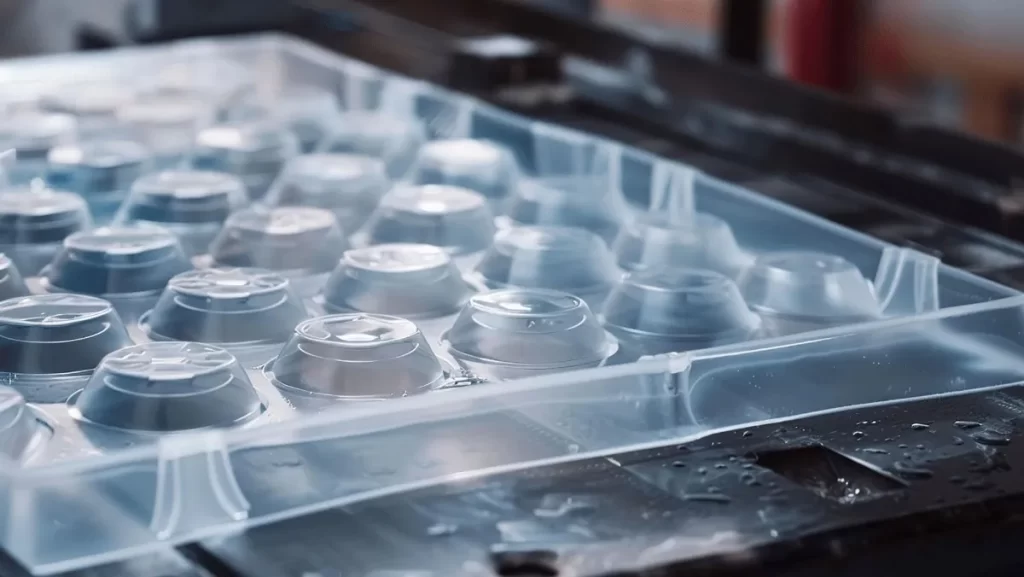
Advantages of Thermoforming
Thermoforming has good points. But it does not work well for all jobs. Injection molding does better in some key areas. It gives more exact results and handles more volume. It also works with more types of materials. Here are some limitations of thermoforming:
- Thermoforming cannot make parts as exact as injection molding can. It cannot make small details and tight fits like injection molding does.
- Big production runs make injection molding cost less money. Each part costs less when making many parts. Thermoforming costs more per part for big jobs.
- Injection molding works with many more plastic types and extras. Thermoforming only works with sheet plastics. This limits what materials can be used.
- Thermoforming makes walls that are not the same thickness. Deep shapes and complex forms make this problem worse. This makes parts less strong and less reliable.
Limitations of Thermoforming Compared to Injection Molding
Thermoforming also has some downsides:
- Not good for very detailed designs or high-precision parts.
- Usually works best with thinner materials.
- Parts may not be as strong as those made by injection molding.
Advantages of Injection Molding Compared to Thermoforming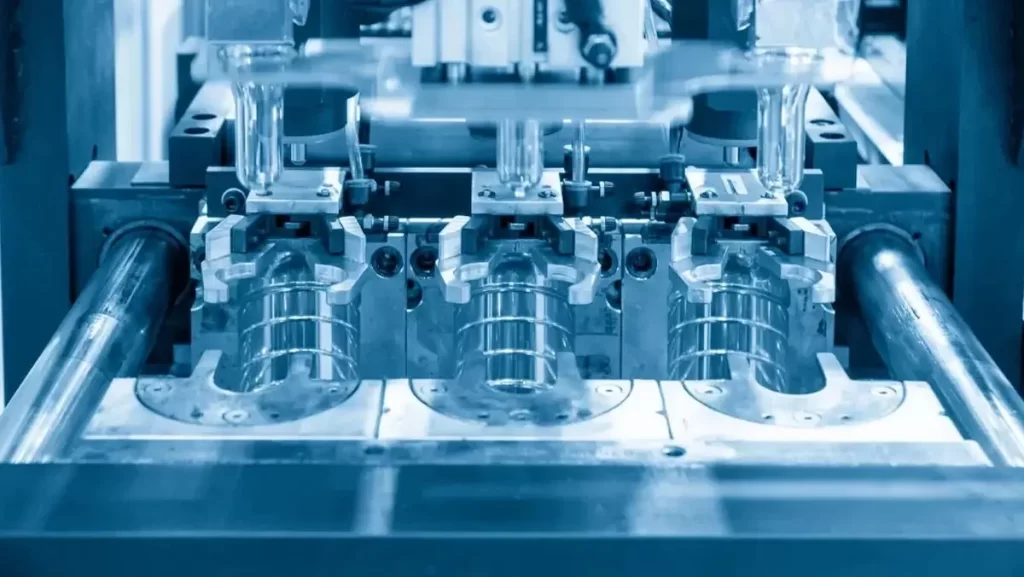
Advantages of Injection Molding
Injection molding gives many good benefits. It works better than thermoforming for exact and big production. Here is where it does better than thermoforming:
- Injection molding makes very exact and detailed parts. This method works great for hard designs and shapes.
- After the mold is made, each part comes out almost the same. This gives reliable results when making many parts at once.
- It works with many types of plastic and extras. This gives more strength and bend options than normal thermoformed parts.
- Parts made this way are often stronger and tougher. They form under high pressure and this makes them stronger than thermoformed parts.
- You can make parts with inserts, threads, or cuts. This is hard or cannot be done with thermoforming methods.
Limitations of Injection Molding Compared to Thermoforming
Injection molding has good points, but it does not work best all the time. Some areas show that thermoforming works better and makes more sense:
- Making molds for injection molding costs much more money. This makes it bad for small jobs or test parts.
- The design work and testing take much more time. Making tools for injection molding needs more time than the thermoforming setup.
- Thermoforming works better with big parts and large sizes. Injection molding has limits because machines cost too much for big molds.
- Thermoforming lets makers change designs fast and easily. Injection molding needs costly mold changes when makers want to fix things.
Explore More: Compression Molding vs Injection Molding: Which is Best for You?
Quick Table – What is the Difference Between Thermoplastics and Injection Molding?
| Feature | Thermoforming | Injection Molding |
| Process Type | Heating and forming | Melting and injecting |
| Material Usage | Typically, sheets of thermoplastics | Plastic pellets (various thermoplastics) |
| Complexity | Better for simpler shapes | Handles complex geometries |
| Production Volume | Cost-effective for low to medium volumes | Ideal for high-volume production |
| Tooling Costs | Lower thermoforming tooling costs | High injection molding tooling costs |
| Cycle Time | Generally faster for simple products | Longer due to injection and cooling |
| Surface Finish | Good, but may require additional finishing | Excellent, often with minimal finishing needed |
| Strength | Generally lower than injection molded parts | Generally higher due to density and structure |
Interesting Read: CNC Machining Vs Injection Molding: What are the Differences?
Cost Considerations – Thermoforming vs Injection Molding
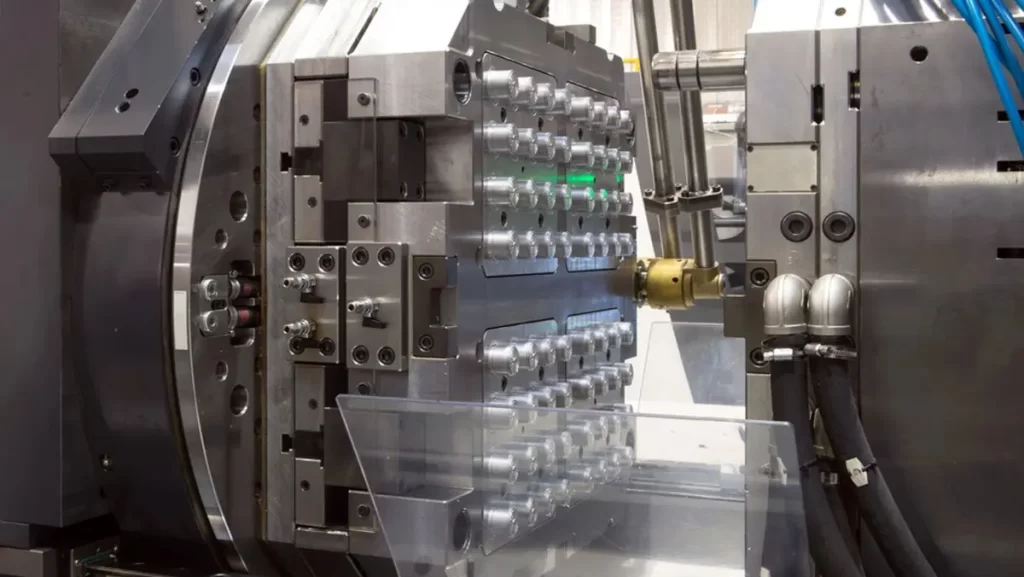
Cost of Thermoforming vs Injection Molding
The evaluation of manufacturing costs enables businesses to select appropriate methods for their operations. The financial analysis enables businesses to select appropriate manufacturing processes for their requirements.
How Much Does Thermoforming Cost?
The production costs of thermoforming remain lower for manufacturing runs between small and medium sizes. The affordable setup expenses of thermoforming make it suitable for developing prototypes and running small-scale production.
Injection Molding Cost
Want to know about Injection Molding Cost? The initial expenses of injection molding remain high because mold creation requires advanced complexity.
The production of many parts becomes economical through injection molding because the cost per unit decreases significantly when manufacturing at large scales.
Material Considerations of Thermoforming vs Injection Molding
The selection of materials determines how well a product will perform and how suitable it will be for its intended use. The selection of materials for each process requires knowledge of available options to achieve specific characteristics.
Thermoforming Materials
The materials used for thermoforming need to have thermoplastic properties. Some common thermoformable plastic materials include:
- Polyethylene (PE): Lightweight and flexible.
- Polystyrene (PS): Rigid and easy to mold.
- Acrylonitrile Butadiene Styrene (ABS): Strong and durable.
Injection Molding Materials
The injection molding process accepts both thermosets and thermoplastics as well as other materials. Common materials include:
- Polypropylene (PP): Versatile and low-cost.
- Polycarbonate (PC): High strength and transparency.
- Nylon (PA): Strong and resistant to abrasion.
Applications Across Industries of Thermoforming vs Injection Molding
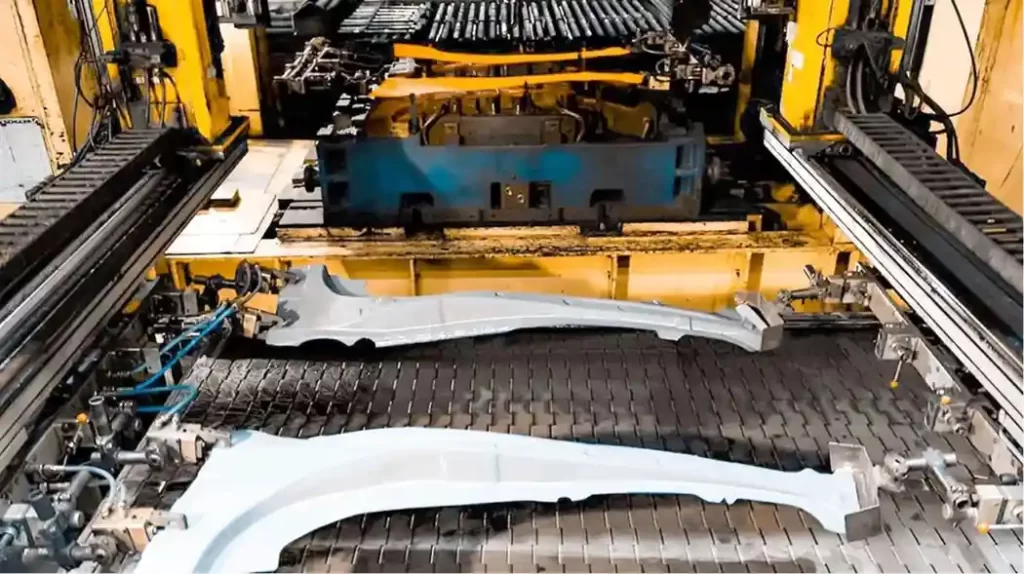
Applications Across Industries
The two manufacturing techniques demonstrate versatility because they serve different industries. The selection of appropriate manufacturing processes depends on understanding their specific applications.
Thermoforming Applications
The supply of thermoformer parts includes a variety of items essential for different applications, from packaging to automotive components, just like:
- Packaging: Food containers and blister packs.
- Automotive: Interior trims and lightweight panels.
- Medical: Custom trays for surgical instruments.
Applications/Uses of Injection Molding
The manufacturing process of injection molding serves multiple sectors, so here are few injection molding uses:
- Automotive: Complex components requiring high precision.
- Consumer Goods: Toys, kitchenware, and electronics.
- Medical Devices: Precision components for varied applications.
Conclusion
Plastic product manufacturing depends heavily on two essential manufacturing methods: thermoforming vs injection molding.
The production of basic parts at low to medium volumes suits thermoforming better than injection molding which produces complex designs at high volumes.
The selection between these two manufacturing methods depends on project requirements which include cost considerations along with production volume and design complexity.
Contact with ProleanTech Experts to discuss your needs, or learn more about our thermoforming and Injection Molding Service for efficient manufacturing solutions.
For tailored solutions and expert guidance, get your quote today!


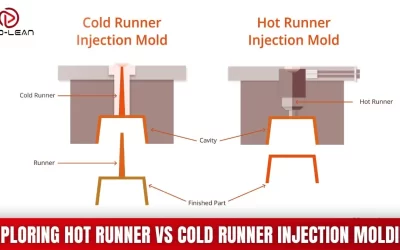
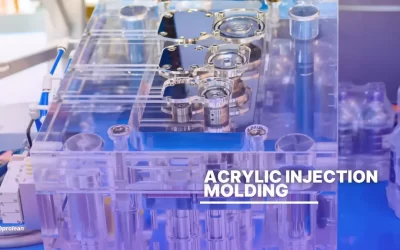
0 Comments